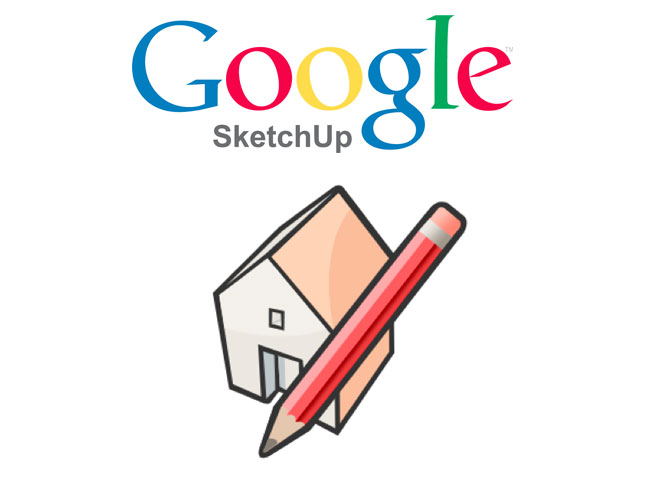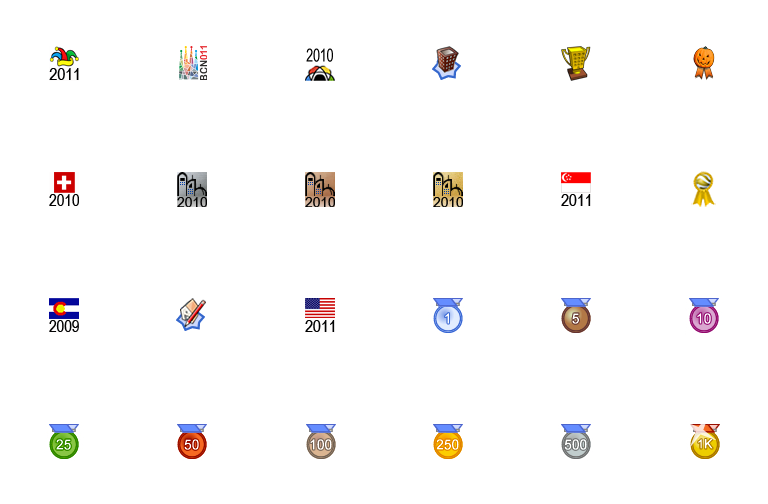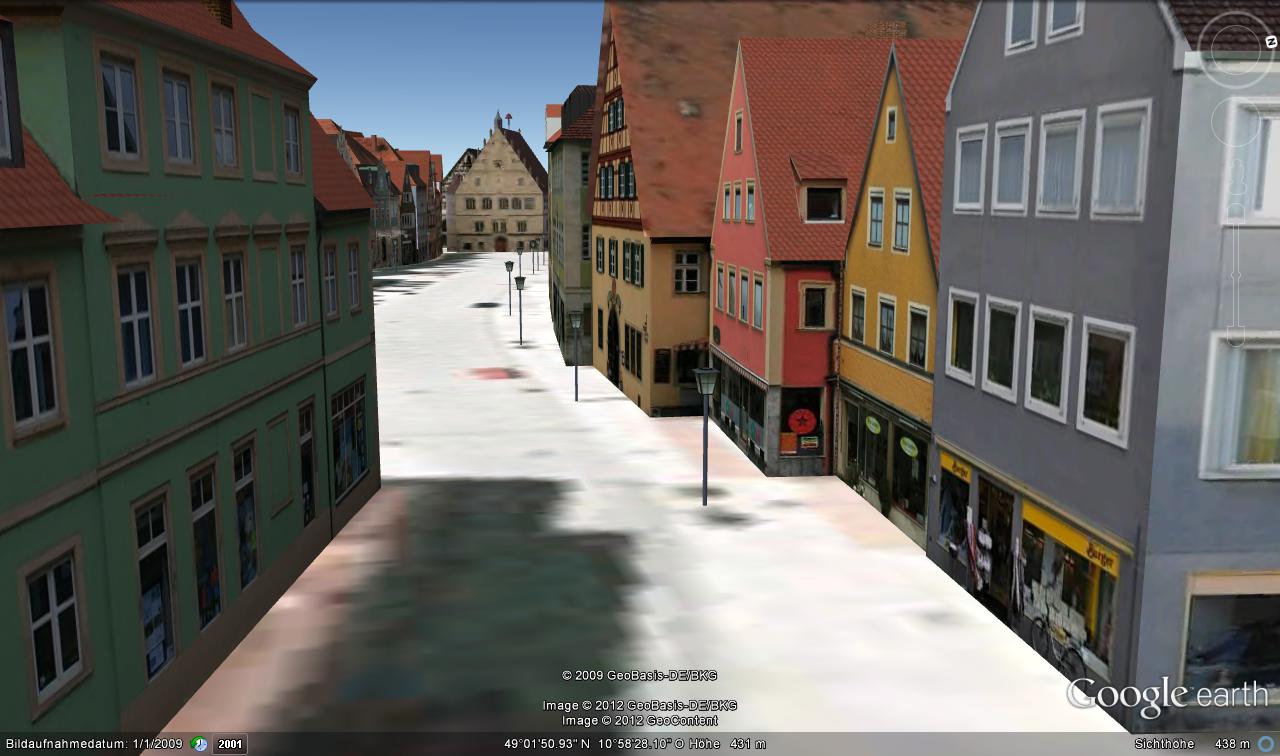When Google sold 3D geo-modeling software Sketch-up, a dedicated community of Google Earth developers were left behind. Is this a case of digital labor and exploitation or just an agreement based on mutual consent that ended, like relationships so often do?
Pep-Talk/Tech-Talk
The crowd in the conference room follows the slide-presentation intensely. Each individual feels addressed and important. As a whole, they feel indispensable. The presentation takes place at the 'Google Geo Users Summit' in Barcelona, 2011. The speaker is the self-proclaimed 'geo-evangelist' Aidan Chopra. In his talk he claims that the internet has given way to the empowerment of the individual. From being 'static, read-only and centrally-controlled' the internet has evolved into something dynamic, 'interactive, user-contributed' and even 'social'. 'Super-heroes of the Future', Chopra calls the crowd in front of him. They are the ones who, together, can change the future and make the world a better place.
To do that they have to continue their careers as active volunteers for Google, contributing their energy and time to Google's 'geo' oriented platforms. A part of the crowd are 'geo-modelers', individuals freely adding 3D-content to the virtual Earth - Google Earth. Chopra goes on to explain how UGC, User Generated Content, is at the heart of what makes the products of Google incredible. 'No matter what comes next your work is critically important', he states. The peers are aroused by his talk, by the feeling of being super-heroes. At the end they are encouraged to stand in a group and shout 'UGC! UGC! UGC!'.
Two years later, the geo-modelers of Google Earth and their critically important work are discarded and replaced by a more efficient and consistent technology. The 3D-modeling software Google SketchUp is sold along with a huge 3D repository consisting of the collected work of the geo-modelers. Subsequently, Google has made it impossible for geo-modelers to participate in building Google Earth any longer.
A Divided Community
Shortly after Google officially announces to sell Google SketchUp, panic spreads among the huge geo-modeler community. Google SketchUp is renamed SketchUp and users are roughly split into two camps; one camp is skeptical towards the unknown implications of an owner change. The second camp attempts a more pragmatic, optimistic approach. The feeling of panic is vividly expressed in the official user forums, such as the Google Group '3D Modeling for Google Earth & Maps':
‘...I deleted all my ... models!
...I will also delete all my models!
...It is Over.
...People are starting to Jump!
...I, for one, welcome our new ... Overlords.’

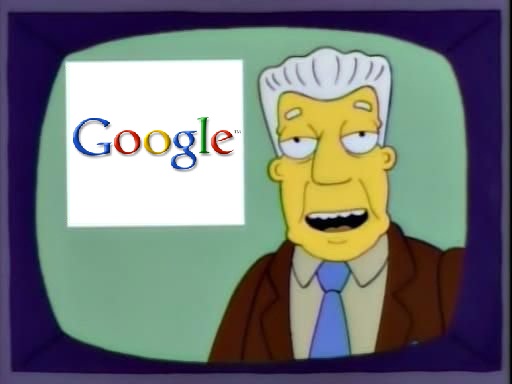
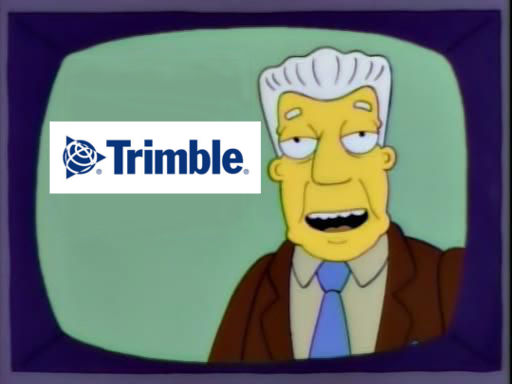
The greeting of the new owner (the new overlords) Trimble, immediately introduces a distinctive relationship between users and provider. The greeting originates from the film adaptation of the book Empire of the Ants, in which mutated super-ants take over the Earth as we know it. One of the characters reacts to the Ants threat by exclaiming 'I, for one, welcome our new insect overlords'. The quote was later appropriated in an episode of The Simpsons, and subsequently 'memified' as a popular template to announce the coming of a new totalitarian regime. Of course the use of the meme was meant as a joke, yet it had a hint of seriousness attached to it.
The thread attracted a lot of attention and became a place (one of many) where modelers shared their concerns for the future of the platform. Many made radical statements about deleting their content from the platforms, while few actually followed through. The discussion clearly indicated a rupture in an ecosystem, in which the users of that system became aware of their situation. They were part of a 'closed circuit', an environment they themselves were not in control of. The power was in the hands of the Overlords and the subjects of the regime, the community of modelers, could only wait to see if blessing or disaster would come.
On the 1st of October 2013, slightly over a year after Google bought SketchUp, Google announced the discontinuation of its user contribution program on the same user forum. Geo-modelers and the content they had produced in the course of several years were to be replaced by newer technology. There were multiple reasons for this decision, some official and others more speculative. The central issue was that the new technology which Google planned to implement - the auto-generation of buildings and landscapes from a vast array of sources - could not coexist with user generated models since this would cause spatial conflicts. Disaster struck the community. Users in the forums pictured this as quite apocalyptic, pleading with the Google community managers, the 'Google Guides', for 'safe haven[s] to model without fearing a sudden auto-[generated] tsunami'.
What mattered to the geo-modelers, was not only the provider making the platform and the tools accessible. The geo-modelers were content as long as these were there to use. What mattered most was having the means for personal and artistic expression and social interaction at hand. Of course executives at Google understood this potential. They were tapping into a self-propelling force, and they knew how to fuel it. In Google lingo users were 'super-heroes', top modelers and even super modelers. Hidden behind illuminated computer screens, working under pseudonyms such as 'Starfish' and 'SnowTiger', the band of geo-champions would model the world into a better place. The super-heroes knew that any normal user of Google Earth most likely never would consider the origins of the virtual world they were exploring or the tremendous amount of hidden human labor at the core of the system. As such the community's wealth was turned into a polished, commodified, product. However as long as the means were there, the geo-modelers joyfully used them. What happened that this situation got so disturbed?
Growing the Earth
Three platforms are at play in this story: Google Earth, Google SketchUp and Google 3D Warehouse. What binds these together is the utilization of the crowd; users who contribute their time and energy producing content, which is then shared among peers and like-minded individuals, and of course with the platform provider. Additionally there is the official modeler forum '3D modeling for Google Earth & Maps', an extremely important space for communication between modelers and Google.
Before Google SketchUp was sold to Trimble, a hardware/software giant in mapping and navigation, geo-modelers used the software to draw their models, and optionally passing them on to be part of Google Earth. Each model would be reviewed by a team of Google employees and far from all were accepted to actually become part of Google Earth. Still, virtual buildings and highly detailed landmarks were soon populating the system. Some modelers even reconstructed whole cities. Many were motivated by the joy and pride of being able to 'claim' that they put their hometown in the digital spotlight. They saw the Earth grow, and they were applauded and approved by Google for it. Other modelers even saw an opportunity for monetizing this virtual architecture, offering their services to landlords, shop owners, and airports, among others.
SketchUp was originally founded by the small software company @Last Software. In 2006 this company was bought by Google, who released the software free of charge. Being a part of Google, SketchUp gained massive attention. A strong community volunteering of geo-modelers grew, which was aided and supported by Google. During six years of Google-ownership the software attracted over 30 million new users, according to the blog Sketchupdate. An official statement explaining Google's acquisition was never made. Jeff Martin, product marketing manager of @Last Software, however hints at an explanation on Google's blog: ‘It's often like that. People see SketchUp and they love it. Now that we're part of Google, how many of those ah-ha moments will happen every day? Already we've had hundreds of users create 3D content in SketchUp and place their models in Google Earth. (A free plug-in enables you to do this.) What will that virtual world look like when tens of thousands of users are doing the same?’
One of Google's central motives is on display here: the 'tens of thousands of users' were to populate Google Earth with houses, high-rises, factories, and landmarks piecing together a virtual rendering of Earth. The latent crowd of users, each eager for aha-moments, was to be activated through free software, a throbbing community, and virtual carrots; symbolic badges, physical gifts, and other perks.
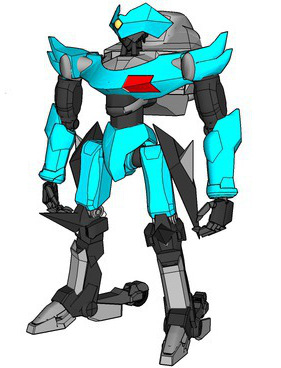
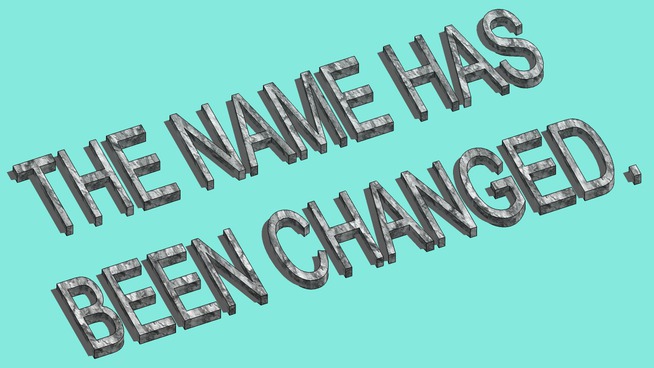
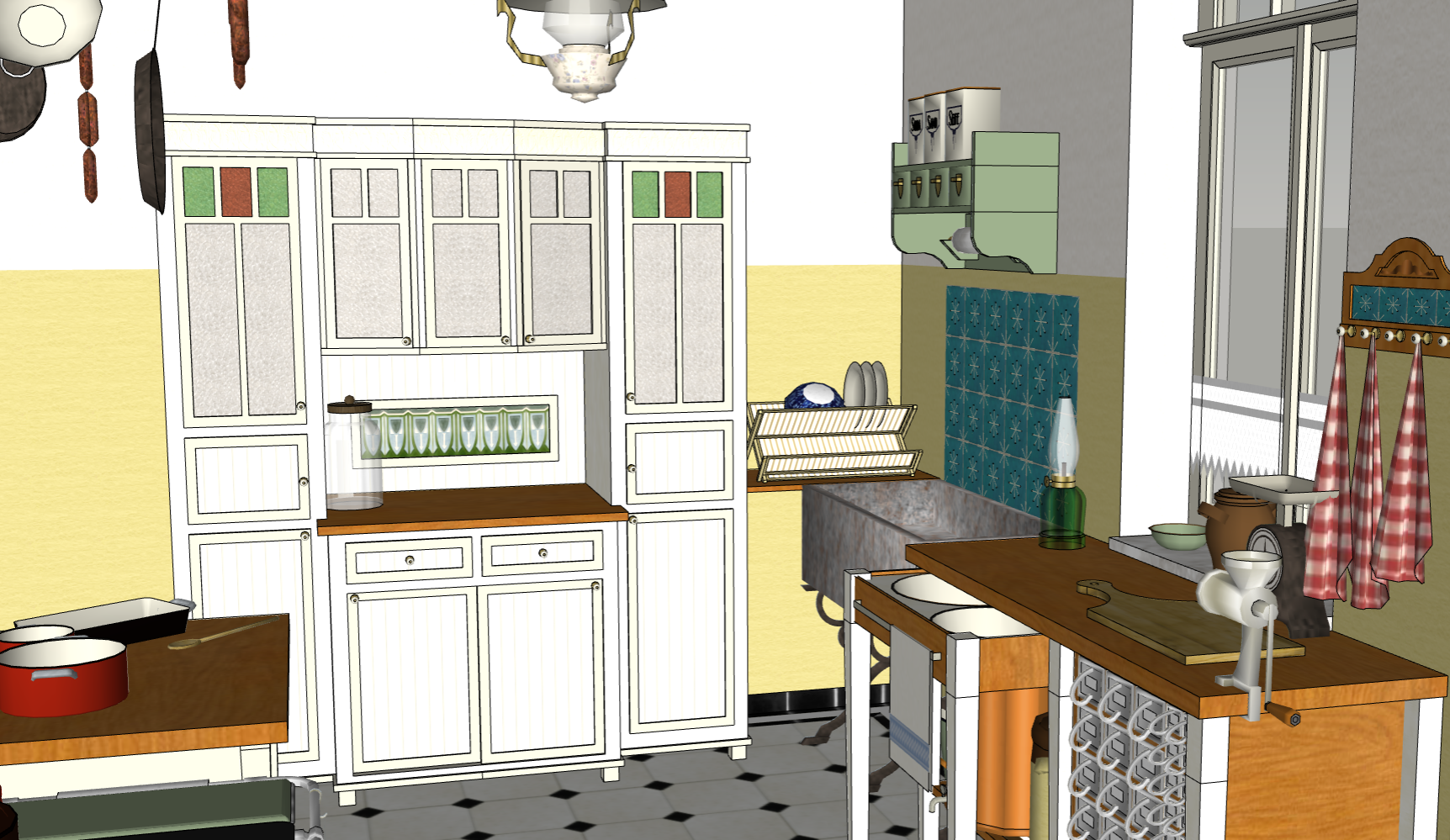
Models from the 3D Warehouse (years unknown)
Warehouse to Factory
As a stepping stone for publishing models to Google Earth, the so-called '3D Warehouse' was founded. Users would upload their models to the warehouse, share them with others - an opportunity to gain exposure and critique - and mark them as 'Google Earth Ready'. This last option would prompt the model to be reviewed by Google before being pushed to Google Earth. According to SketchUp the 3D Warehouse was 'the largest repository of free 3D content in the world', and content-wise it was extremely diverse.
The repository had guidelines and rules for what was acceptable to upload, but these were enforced only through a whistle-blower system run by users themselves. This somewhat loose and open nature of the repository attracted a broad and diverse group of users not only interested in creating content for Google Earth. Many followed their own sub-scenes and niche-interest; from Japanese Mech Warriors to reconstructions of German kitchens from the 1920s to extremely arbitrary, offensive and explicit content.
The open structure created a pragmatic and friendly entry-point for new-comers. Anyone could create a model in SketchUp, upload it to the 3D Warehouse and receive comments by peers. It was not required to create models for Google Earth, but naturally the 3D Warehouse became a runway towards a very invested and passionate hobby for many aspiring amateur modelers. In short: the 3D Warehouse became a factory. It enhanced the workflow and matched the anticipated scale of user generated content; tens of thousands of users doing work for free.
3D Warehouse badges (various years)
A Community of Super-Heroes
As SketchUp gained popularity, millions of models started to fill up Google Earth. Users felt proud of taking part in a huge online community with the vision to digitize the physical world. They felt needed (and indeed they were) to create content for the virtual Earth, turning it into an almost tangible space, free for all to browse and enjoy.
Several 'geo-user camps' and summits were held around the world in honor of the modelers and Google's other geo-related platforms. The events had the purpose of bringing together the most dedicated volunteers, to hear out their suggestions and to inspire them to do even better. They were served food, provided accommodation in expensive conference hotels, and engaged in a tone to make them feel extremely valuable. Through the convincing rhetoric and continuous nudging, modelers felt a strengthened relationship with each other, and a strong commitment towards the platform they were helping to build up.
The crowd became a self-supporting band of super-heroes committed to a higher goal. Super-heroes don't quit. They might struggle, but will always win. Super-heroes (emphasis on plural), the fictive champions of cartoons and Hollywood blockbusters, are by nature the good-guys, making the world a better place while sustaining peace and order. Their motives are beyond any personal scope and the result of their actions are meant for the common.
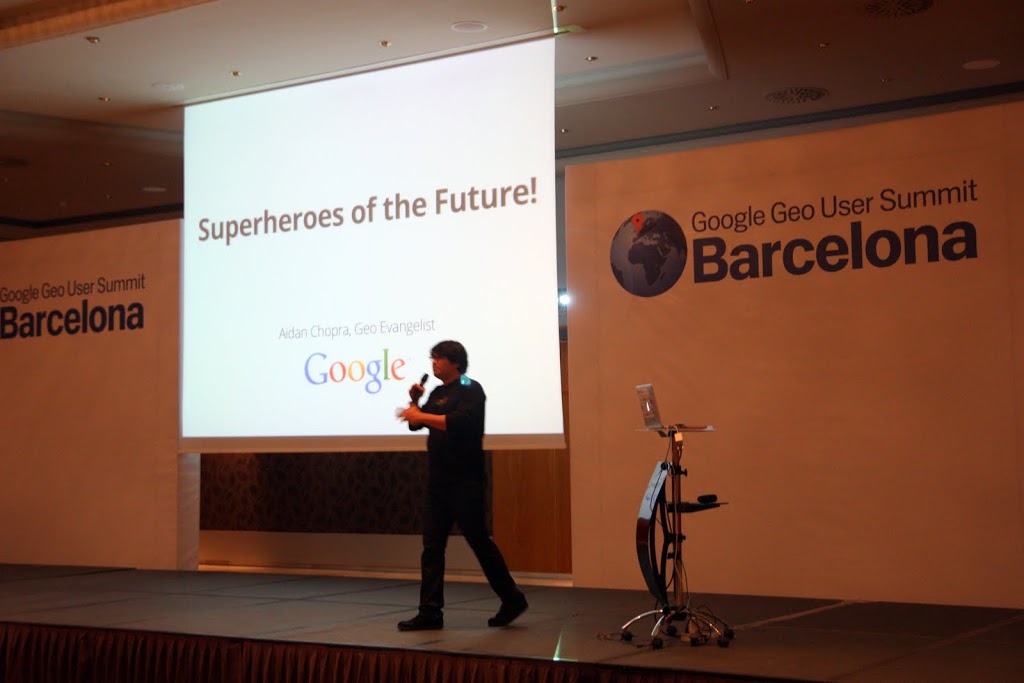
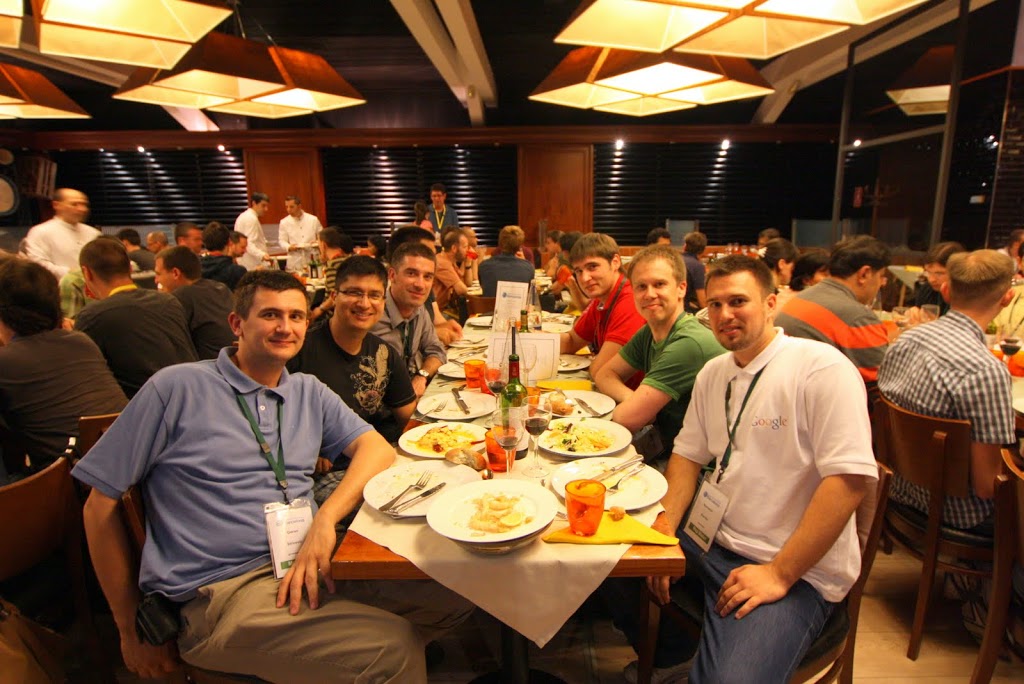
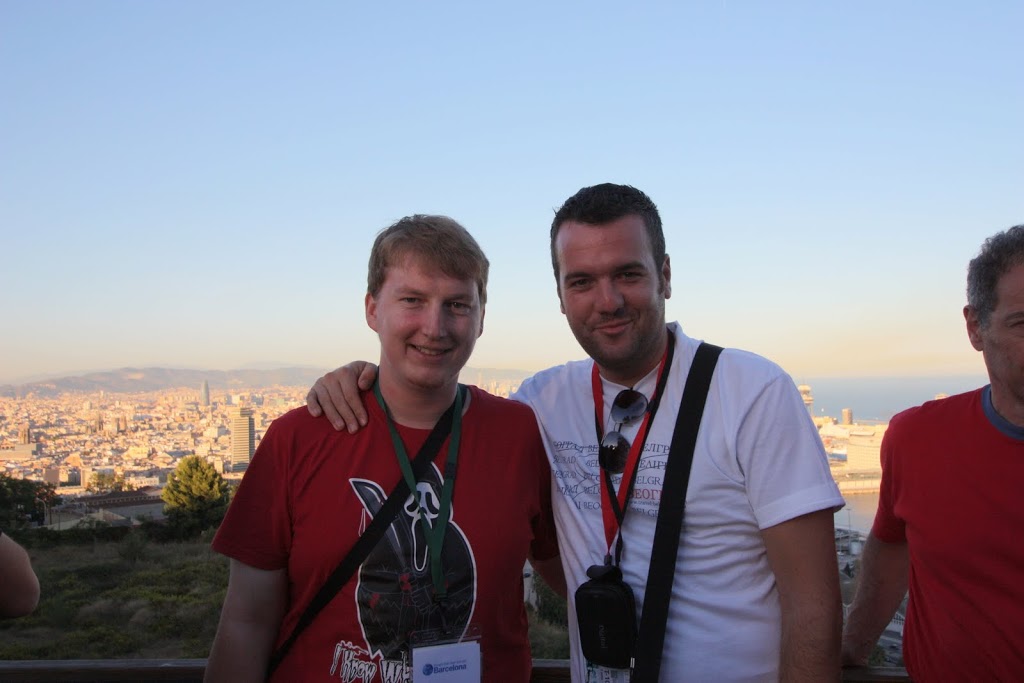
Through a series of open interviews I've had contact with some of these super-heroes. Initially I approached the dispersing community through the official forum. I addressed modelers asking for their opinions and feelings about Google SketchUp, Google Earth, their relationship to Google, and whether this changed after the platforms were sold. Shortly after posting my questions, I was banned from writing any further posts without it being 'reviewed' by Google staff, and my entry was 'locked', preventing reply from any modelers. Google Guide Craig closed the forum thread 'To the Modelers of the Earth' in the forum, by writing: ‘Hello Lasse, this forum is supported by Google and is specifically and strictly for the community of 3D modelers for Google Earth & Maps. Discussion of other topics, especially in regards to the business decisions of the two companies involved, Trimble and Google, would be inappropriate for the purpose of this forum. Thank you - Craig’.
After this failed attempt I addressed modelers directly through email. My main concern in the interviews was the motivation driving each modeler.
Amateur Experts
Matthias Basler is a German geographer and data scientist. His career as a 3D modeler ended abruptly with his determination to delete all his models from Google Earth and the 3D Warehouse out of frustration with Google's decision to sell SketchUp and shut down the platforms. Basler started out by modeling his own house and from this he moved on to model a dozen of buildings in Weißenburg in Bayern, Germany. Gathering knowledge about the software, its bugs and glitches, and getting to understand how a model would be easily accepted to Google Earth by the 'review team', he realized he could help other modelers. The result was the popular online reference guide Tips for modeling Buildings for Google Earth (2008), that was 'acknowledged and pointed to by the Google Guides', as Basler writes.
Baslers passion for modeling did not limit itself to the act of just building, but extended much further. He got involved with other like-minded individuals at his own 'level' and he was addressed as an expert and officially recognized by Google. Of course this drove him into a position where he was deeply invested in the platforms on a personal level. The more fellow modelers he assisted, the better his reputation grew. At the peak of his 'modeling career', he had produced more than 400 buildings in Weißenburg, which gained so much attention that his efforts reached local media and officials, tells Basler: ‘The city of Weißenburg asked me to use [my] models for a new city map to be applied next to the trainstation in Weißenburg. It is supposed to guide visitors to the tourist attractions of the city [...]. I am still proud walking past this map each time I am at the train station.’
Baslers work extended the digital realm and merged with the physical world. His payment was immaterial and emotionally reflected. He did not see his contribution as work for Google, but rather as a personal investment in himself and his surroundings. Aerilius (the SketchUp username of this interviewee who wants to remain anonymous) is another top-modeler. He addresses my questions by stressing that he was less associated with Google as a brand, and more concentrated on his artwork and the sharing of it. Aerilius never felt like 'a Google Evangelist, but rather as an artist, and Google provided an easy platform for us that required almost zero effort other then making our art'.
Modelers were free to unfold their creative potential, working as autonomous artists from all over the world. Google stayed behind the scenes and let the volunteers create their own community. Basler continues: ‘The community was an important part of the overall project, obviously. How else could the aim to model 'the whole world' be achieved? I never had a problem with 'crowd-sourcing' and I felt it was fair enough: We got a software for free, Google got the models for usage (and bug reports by the way) and each geomodeler could enjoy or envy the fellow modeler's nice buildings. It really gave me a pleasure to soar over cities like Nördlingen (Germany), Getaria (Spain), Antwerp (Belgium), San Francisco or Vancouver.’
Basler was driven by his own personal desire. He is an amateur, in the original sense of the word; a lover of his hobby. The mutual sharing of work in the community was at the heart of Basler's motivation and the central force enhancing this passion. Basler's relationship to Google is similar to Aerilius's experience: modelers were given software and platforms for free, allowing them to unfold themselves creatively and gain attention and social status; Google on the other hand 'crowd-sourced' the creation and building of their product. It is clear that both parties, Google and the modelers, 'earned' something from their exchanges.
Close up of Baslers model of Weißenburg, Germany, prior his removal of all content. (2009, 2012)
Model for Profit
In contrast to Basler and Aerilius', K. (this interviewee also wants to stay anonymous) was a geo-modeler with a different approach to her modeling practice. K. modeled for profit, serving various local clients: airports, vacation homes, dental surgeries. Her 3D modeling hobby turned into a 3D modeling profession, and she managed to carve out a small business niche from which she made a living. For her too, Google's position was of less importance, as long as they provided the platforms. K. writes in our email correspondence: ‘I made money off their platform and they never asked for a cut. We used Google Earth. They didn't exactly take advantage of anyone. modelers either modelled for money or fun. They shouldn't expect power over Google's policies as well. […] I have no regrets. Technology will always be disrupted. I had fun, made thousands, and learned a lot. […] I started waitressing this winter, after shutting down my modeling business. I'll work here for another few weeks until the season ends in this vacation town, and hopefully by then I'll have found a GIS/Marketing/Design job in another area.’
 Baslers model of Weißenburg, Germany, prior his removal of all content. (2009, 2012)
Baslers model of Weißenburg, Germany, prior his removal of all content. (2009, 2012)
Immediately, K. distances herself from the idea that Google might have taken advantage of her and other modelers work. The platforms were spaces for both entities to exist in a symbiotic relationship; Google had their product built by thousands of modelers working for 'free' - a 'free' which did not mean that the modelers went away empty handed. They got social rewards in the form of peer recognition, pride in having modelled a town, and the occasional monetary win gained from a third party. In the 2012 Google Model Your Town Competition, Google puts it like this:
Show your civic pride (and maybe win a prize) by creating a 3D portrait of your community and sharing it with the world. You have the power to get your town on the map – and there's no bigger map than Google Earth.[…] Having a 3D model of your town in Google Earth helps residents and visitors understand it in a way that flat maps and photographs can't. You can be a local hero by making a contribution to your town's future.
The quote is filled with buzzwords: pride, win, community, share, you, hero, future. The individual in the crowd is addressed as a unique person, a proud hero ready for the win. Yet, with every single individual being unique on a platform that actually aims at presenting a unified and streamlined product, the idea of the unique seems just a mode of address. The promise of 'the unique' is a carrot of engagement intended to make the individual modeler feel special and energized to work. The crowd, the 'collective unique', is aroused, resonating in a productive frequency.
Outsourcing to Crowdsourcing
The case of Google Earth is not a stand-alone example of conflict between users and providers based on participation and user generated content. Throughout the last two decades, the idea of using the crowd for a productive purpose has increasingly gained attention among tech-entrepreneurs and startups. Moreover, this business strategy is on the verge of becoming mainstream. In 2005 Jeff Howe and Mark Robinson, editors at the tech-magazine Wired, defined the term 'crowdsourcing' as follows:
Crowdsourcing represents the act of a company or institution taking a function once performed by employees and outsourcing it to an undefined (and generally large) network of people in the form of an open call. This can take the form of peer-production (when the job is performed collaboratively), but is also often undertaken by sole individuals. The crucial prerequisite is the use of the open call format and the large network of potential laborers.
Outsourcing implies moving production and services from a rich and demanding geographical location to the opposite; a geographical location with lower wages, less restrictions, and easy access to raw materials. The product is imported to, rather than produced in the first location. Crowdsourcing is a step beyond outsourcing. It is freed of physical constraints. It does not rely on a physical machinery in a specialized industry, and it does not depend on proximity or concern itself with geographical location. It is a fluid shape, often intangible in physical form, yet seemingly more and more important in an economy based on the exchange of information rather than on traditional goods.
The personal computer and the internet have initiated a mode of production where the worker gradually shifts position. From a place of physical constraint - which also implies physical insurance - the worker moves into the position of a hired contractor, a 'freelancer' (a knight for hire) who is always available. Of course, traditional industry is still ruling at large, especially in growing economies. The Chinese electronics producer Foxconn with its million assembly-line workers is but one example. Industry in the United States has also seen slight growth despite the current economic crisis, however this has not meant an increase in employment of industrial workers. It is a direct result of the investment in automation, as David Rotman argues in Technology Review; robotics replace the workers at the assembly line, allowing the humans to pursue the highly individualized goals of the creative, information based economy.
Individuals are still working in full-time jobs of course, but the tendency is for the individual to constantly be urged to search for his or her uniqueness. If this cannot be accommodated in daily work, then it can or should be fulfilled outside of working hours. The modeler K. might be waitressing at the moment, but not long ago she realized her dreams of 'making' through Google Earth.
In his book Crowdsourcing – How the Power of the Crowd is Driving the Future of Business, Jeff Howe describes the idea of tapping into the creative potential of individuals around the globe by '[using] the network to harness individual people's spare cycles – the time and energy left over after we have fulfilled our obligations to employers and family'. The spare cycles refer to things that might not be realized through a nine to five job, the spare creativity which finds its outlet through hobbies, off-work activities, and the liquid space in between. Howe draws a direct parallel between man and machine; the unrealized potential of the human brain is paired with the spare cycles, the unrealized potential of the computer's processing unit. Labor is dehumanized.
Howe's idea of the dissolution of the capabilities of man versus machine (or the illusion of it) is getting more and more attention and is far from an isolated example. A prime illustration is Amazon's Mechanical Turk, an online marketplace for contractors looking to hire a freelanced workforce for the execution of very repetitive tasks, which are just on the verge of what's possible for computer algorithms to complete. Mechanical Turk refers to an 18th century box-shaped, chess-playing contraption which gave the impression that you would play against an artificial intelligence. In reality, you were combating a human-being hidden within the box. And what's the difference? The result is the same. Considering the case of Google Earth, man has been trumped by machine. Yet as a user and 'browser' of Google Earth you would most probably never consider this, since the 'surface' appears identical.
Appropriation of Community
Reminiscent of Howe's thoughts of the creative potential, the former modeler Joe B. writes that he started modeling 'as a hobby and a way to de-stress after work , [...] something which grew into a bit of an obsession at one point.' Following Howe's analysis, the result of Joe's hobby is the aggregation of the unused spare cycle of the human processing unit, now realized to its fullest extent. Howe continues:
Crowdsourcing is the antithesis of Fordism, the assembly-line mentality that dominated the industrial age. Crowdsourcing turns on the presumption that we are all creators – artists, scientists, architects, and designers in any combination or order. It holds the promise to unleash the latent potential of the individual to excel at more than one vocation […] Crowdsourcing capitalizes on the deeply social nature of human species. Contrary to the foreboding, dystopian vision that the internet serves primarily to isolate people from each other, crowdsourcing uses technology to foster unprecedented levels of collaboration and meaningful exchanges between people […] Online communities are at the heart of crowdsourcing, providing a context and a structure within which the 'work' takes place.
The worker's role is merging with the consumer's, and the consumer is of course not a mere consumer, she or he is a prosumer. The echo of 'UGC', User Generated Content, is still bouncing off the intangible walls of the open factory. Rather than being the antithesis of Fordism, crowdsourcing is an extension of it, a natural development within the context of the internet. The worker is no longer a slave of the assembly line, but a volunteer, free to join, share, collaborate, and create meaningful exchanges with other people. 'Work' in its slippery quotation marks is no longer work but an enjoyable, personalized venture where the latent creative potential is unleashed and shared with others. Howe turns work, a rigid matter associated with boredom and repetition, into an attractive state in which it loses its seriousness but remains ambiguous: what the eager members of the 3D community are completing could be work but it could also be play.
Julian Kücklich coined the term 'playbour' in 2005. A precise observation of these merging dynamics of play and labour . This state of 'work' appeals to businesses and corporations wanting to take advantage of the newfound source of cognitive creativity that comes with the internet. Broadening the scope, playbour seems to find its way into all aspects of society. Governments and national states introduce elements of gamification and competition, encouraging individuals to engage their 'open data' in controlled environments, like in the Dutch project Data of the Crowds, police departments organize hackathons where programmers can try to force and hack official security systems without any legal consequences and national states build virtual one-to-one scale models of countries to be used in MMORPGs (massively multiplayer online role-playing games) as branding and educational material.
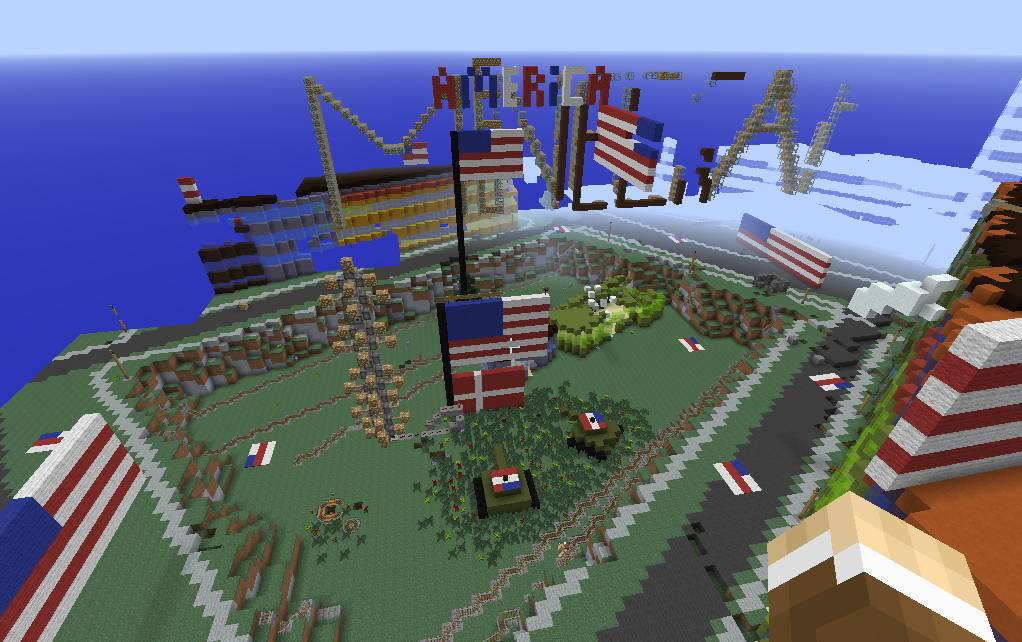
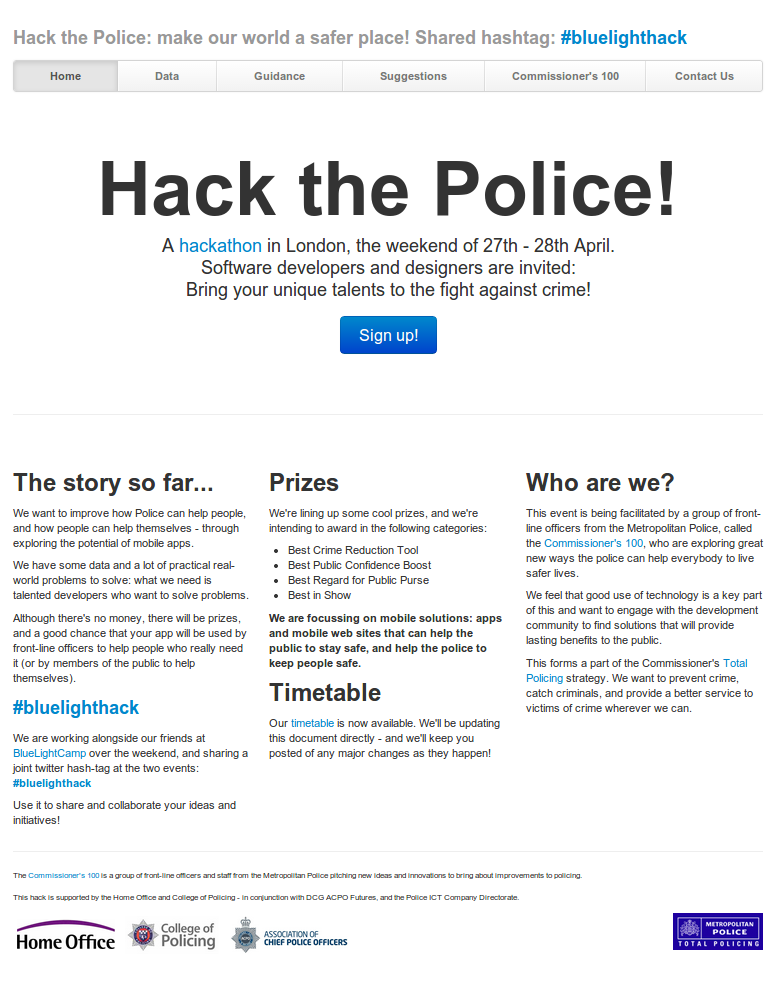
Nudging for Work
A community does not establish itself on its own, and people rarely want to work for free when they encounter the phenomenon in the traditional sense. For businesses it's therefore important to find a shape for whatever product they wish to have built by the crowd, a shape which does not appear as work in its traditional sense. Investments in the community are also crucial. Platforms (physical servers and applications) are necessary and the community must be nurtured, something which can happen simply through the establishment of forums or bulletin-boards where 'workers' can meet and discuss. The investments will shape the community, and in optimal settings it will push the 'workers' to output a desired content.
In his book Code Version 2.0 Lawrence Lessig argues that 'Code is Law'. Code shapes the way we behave and what we output. The classic metaphor is to view code as architecture. The code is the 'house', it has entrances we can enter, hallways that guide us, and departments intended for particular use. Each part encourages certain behavior; we pass through the door rather than break down the wall. The house becomes a law for our actions.
Geo-modelers using SketchUp were free to upload any content to the 3D Warehouse they would desire. No barrier existed for any modeler to participate. This helped establish the 'open', free feeling of non-work. Being free to do what ever you wanted could never be seen as work. The next stage, uploading content to Google Earth, was already a much more invested process. Modelers would hope for their 3D constructions to get accepted. The laws of the platforms tightened. Several modelers explain that the review process and criteria for having a model accepted to Google Earth got stricter and more efficient over the years. Aerilius highlights Google's attempts to harness the crowd through code, social nudging and elements of gamification:
Over time, Google learned to 'use' its community and began to systematically organise it, by introducing Community Managers […], competitions […], conferences […], and a community website […]. Modelers who attended [conferences] only had to pay their travel, but were provided with [accommodation] and food in a 4 star conference hotel. Google also introduced 'badges' with amount of achieved models in 3D Warehouse to honor modelers and they had a special 'Supermodeler' group of 50-100 selected modelers. Other changes where revised acceptance criteria. Newer acceptance criteria was supposed to make reviewing easier for Google staff and reasons for rejections more transparent to users […]. In general they were stricter to avoid an inconsistent user experience for Google Earth users […].
Google did not take the community for granted, but cradled and molded it in its own interest which 'of course […] steered the whole process', according to Aerilius. Google established a platform which was feeding itself; modelers were rewarded symbolically, in some cases physically. And so the best became top-modelers and super-modelers. Super-heroes.
Laborers in Exile
And then the sprawling ecosystem made possible by Google, was suddenly made impossible. On short notice geo-modelers could not practice their hobby anymore, for some their paying job was put to an end. Furthermore, communication between modelers became difficult, since the internal messaging system was dismembered. Two weeks prior to selling the platforms, Google decided to thank the most active modelers by shipping out presents to over 600 individuals around the globe. A plaster on the wound, the present contained a 'Thank You'-postcard, sticky notes, a mug, a pencil case, and two stickers. The recipients were divided. Some got excited and, urged by Google, started posting 'selfies' on the official user-forums holding up the Google-mug. Others were less optimistic. One of them wrote on the forum: ‘I got my gift today too. Thanks! I might have changed the wording on it though. It could have read 'I modelled over 2000 models for Google Earth and all I got was this coffee cup' or 'I lost my primary source of income but at least I got a cool coffee cup out of the deal'. Just kidding. Well, not really.
Google lost interest in their thirty million plus members of super-heroes. They were abandoned and forced to retire. The once flourishing community had dissolved, exiled from the Earth they once inhabited. The moment Google announced the sale, the geo-modelers all of a sudden 'woke up' and saw the precarious position they found themselves in. You had the choice to passively welcome the new overlords or to bail out. A choice which might seem radical, but actually had no impact on Google itself. To repeat after K., the modelers shouldn't expect power over Google's policies as well.

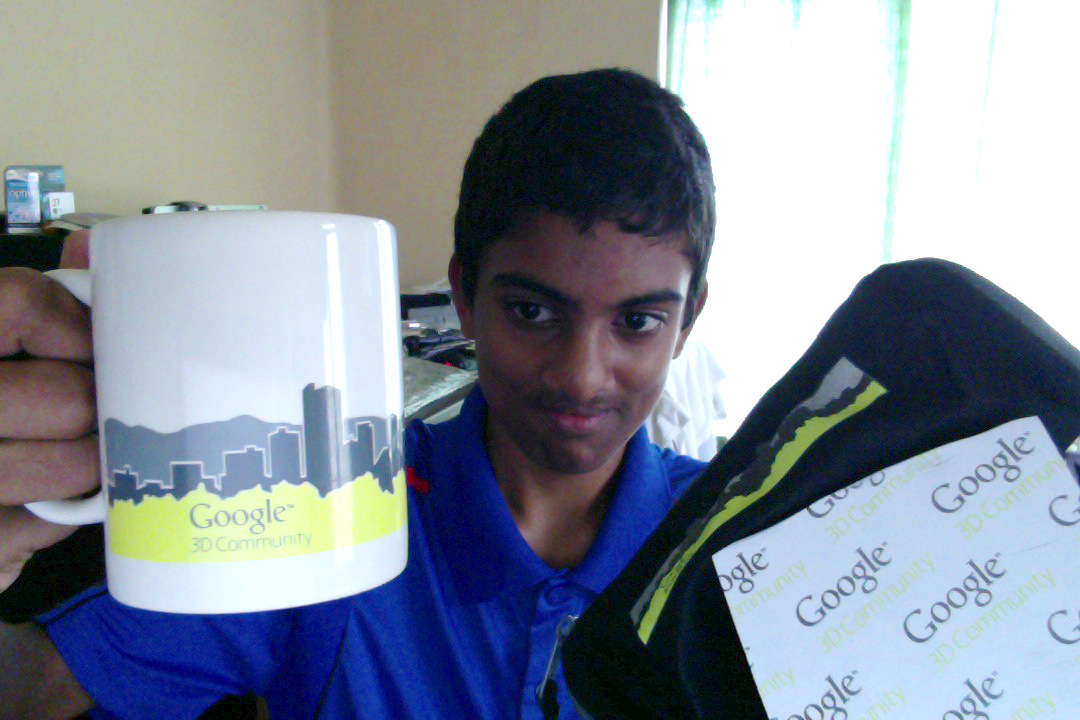

A modeler's photo of the Google gift (2012)’
In her article 'Free Labor' in the anthology Digital Labor published by Routledge in 2013, Tiziana Terranova introduces the idea of the society-factory from a post-Marxist perspective: 'work processes have shifted from the factory to society, thereby setting in motion a truly complex machine'. Terranova engages the internet as an example of the working society-factory which 'far from being an unreal empty space, […] is animated by culture and technical labor through and through, a continuous production of value that is completely immanent to the flows of the network society at large'. She continues to address the giants of the society-factory, corporations which understand the potential of the crowds, and harness it accordingly:
Today, in the middle of chronic financial turbulence and a general slowing down or recession of the global economy, the digital economy of the social web seems to belong to a different universe, as [the] numbers of users increase exponentially and the profits and market value of web 2.0 giants are exceptions to the general depressing economic climate. The idea that the value of such corporations is given by users' participation has become business sense.
Terranova paints a sharp picture of the workers in the digital machinery, and argues that the laborers producing the value for such companies, like the volunteer Google geo-modelers, are exploited: 'a new kind of exploitation – that which concerns the immaterial commons of culture and technical production.' She continues:
asking for liberation of free labor means asking for two things: that such profits be returned to those who actually produce them – that is, to living labor – and that social networking platforms should be deprivatized – that is, that ownership of users' data should be returned to their rightful owners as the freedom to access and modify the protocols and diagrams that structure their participation […] As the wealth generated by free labor is social, so should be the mode of its return.
Following Terranova's argument, the modelers have been left to their own devices, in a situation where they cannot utilize the fruits of their labor anymore. Although the modeler might have the right to his or her own creations, while also having them locally stored on a digital drive - the essence of the platform, the community and the social exchanges, has been deflated. Moreover, the participatory nature of the internet has been made obsolete.
The Gray Zone
The gifts were sent to the top-modelers of Google Earth: a physical manifestation of goodwill shown by Google towards the elite of their volunteers. In legal terms it was not necessary to give away anything, since all modelers were volunteering. The 'Thank You'-postcard found in the bundle reads: ‘You've proven yourself to be one of the top modelers in the world, contributing at least one hundred models to Google Earth. Please accept this gift as a symbol of our gratitude for all your hard work.’

Most striking is the choice of addressing the modelers 'work' as hard work. The fine line between 'work' (in its ambiguous state) and work has clearly been crossed. Following Terranova's rhetoric the modelers are (unknowingly) workers, freely giving away their labor in a system which accumulates everything. That is, until the owners in the system decide to sell the accumulation, and dismantle and find another more efficient sources of labor.
Schumpeters notion of creative destruction, the process of industrial mutation that incessantly revolutionizes the economic structure from within, incessantly destroying the old one, incessantly creating a new one, applies here. The human labor-force amassed by Google is destroyed because of industrial mutation; the introduction of algorithmically generated content. Interestingly, it's not one format replacing another (vinyl record – cassette – cd – mp3) or a machinery which is rendered obsolete, it's the human.
Yet, despite the Google workers being suppressed and exploited, hardly any resistance is evident. In the interviews slightly more than half of the modelers are positive towards Google, if not extremely positive. After all some modelers uploaded their Google-mug 'selfies', despite the offensive and patronizing tone of the postcard.
Maybe there is more to the argument of exploitation, a level Terranova does not touch upon. Are the modelers working in a bubble of autonomy and artistry, an illusion which bursts and clashes with Googles nature as business? Or is the mindset of the modeler simply being realistic: we used Google and maybe Google used us? Consider the statements of modeler V. (who wants to stay anonymous): ‘When Google announce[d] its plan, it was very frustrating. I was thinking about a small business with this technology in the local market, so I immediately quit the idea. […] They [Google] got almost unlimited help to create the 3D representation of our world for the price of some mugs. […] [N]obody forced me to create 3D models… I guess I did those just to increase my own ego. Of course, if Google contact[s] me to hire me, I would accept ; )’.
Also the modeler Joseph Jasper emails: ‘It's kind of funny, but my initial thought was along the lines of 'I already gave them over 320 models and hundreds of hours of work for free,' but then I realized that in fact, they've given my SketchUp and the 3D Warehouse for free also.’ Opinions like the above prevail throughout my talks with modelers. There is a continued trust in Google. Users got free software and did 3D modeling for their own 'ego' in exchange for handing over their content to a closed platform with an uncertain future. This exchange happened in a relationship which can be seen as biased towards Google, since they held the power to accumulate content and work-force and over time shaped the conditions of the platforms. On the other hand, modelers were needed for the platform to work. Google needed its users, and it invested a great deal of resources and time in them. It developed a series of software, released as freeware, which in the end was appropriated for a vast arrays of purposes. It created space for a community and a system in which the individual could roam freely without being forced to really work. Should a volunteer expect more? Is the social wealth Terranova addresses not being repaid simultaneously through the use of the platforms?
Technology is to blame, not the company actually developing the technology, one could say. Marxists, however, would call this the modelers false consciousness. Volunteers actively defend Google's decision, a decision which rendered their own work and existence as volunteers obsolete. The question of exploitation becomes a gray zone, and if you're clever, you work in the gradients between black and white.
RIP!
There is a disconnect between the labor of the modelers and the users consuming Google Earth. The work of the disguised super-heroes spending endless hours modeling the Earth, eventually to be laid off, was generally never thought of as work completed by humans. It was just there, easily accessible and wrapped in the highly designed, user-friendly interface of Google. Users would never expect less. However it becomes clear the 'just there' is a partial and polished story spun around cybernetic fantasies of clean, efficient systems. The Fordist factory has found a new face, one which has extended the notion of outsourcing to the idea of crowdsourcing. Yet the core is the same: efficiency, feasibility, and denial.
The machinery is not physical but social, aiming to aggregate unused potential and spare processing-cycles of the cognitive laborer. Google engineered such a social factory, and in it various characters were produced. Some consider themselves to be unique entities autonomously making art for the sake of the community and themselves while others have more external or material motives. Yet they all share a common dependence and addiction of the platform. Like one modeler states: ‘I quickly became addicted to SketchUp. I found it to be so intuitive and so elegantly simply. I spent many hours a day.’
Terranova's proposal to return the social wealth produced by the modelers but accumulated by Google is honest. However, the gift-based and socially engaging approach undertaken by Google dissolves the demand for such a return. Even in the aftermath of the collapse, which was entirely caused by Google's search for a new and more consistent technology than the human laborer, many modelers still worship Google. They post-rationalize, cynically blaming technology or their own ego. The few members who actually object, are either banished or leave in frustration. In any case their traces are quickly swallowed by the ever-expanding crowd.
I, for one, welcome our new (Google) Overlords.
Lasse van den Bosch Christensen is a Rotterdam-based designer and part of Template. This INC Longform originated in his Piet Zwart Institute graduation thesis.
References
Interviews
Email Correspondence 01, Aerilius (2014)
Email Correspondence 02, Matthias Basler (2014)
Email Correspondence 03, K. (2014)
Email Correspondence 04, Joe B. (2014)
Email Correspondence 05, V. (2014)
Email Correspondence 06, Joseph Jasper (2014)
Email Correspondence 07, Beryl Reid (2014)
Literature
Taylor Casti, 'You Can Now Visit An Exact Replica Of Denmark In Minecraft', The Huffington Post, 25 April 2014, http://www.huffingtonpost.com/2014/04/25/denmark-minecraft-to-scal_n_5213328.html.
Jeff Howe, Crowdsourcing: How the Power of the Crowd is Driving the Future of Business, Random House Business Books, 2009.
Jeff Howe, 'Crowdsourcing: A Definition', 2 June 2006, http://crowdsourcing.typepad.com/cs/2006/06/crowdsourcing_a.html.
Julian Kücklich, 'FCJ-025 Precarious Playbour: Modders and the Digital Games industry', Fibreculture 5 (2005).
Lawrence Lessig, Code Version 2.0, Basic Books, 2006.
David Rotman, 'How Technology Is Destroying Jobs', MIT Technology Review 12 June 2013, http://www.technologyreview.com/featuredstory/515926/how-technology-is-destroying-jobs/.
Tiziana Terranova, 'Free Labor', in Trebor Scholz, Digital Labor, Routledge, 2013.
Online References
Aidan Chopra, '2011 EMEA Google Geo Users Summit - Keynote: Aidan Chopra', GoogleGeoCommunity (video), 1 November 2011, http://www.youtube.com/watch?v=xVacZfQPOt0.
Google, Martin, J., 'A new home for @Last Software', Google Official Blog, 14 March 2006, http://googleblog.blogspot.nl/2006/03/new-home-for-last-software.html.
Google, Official modeling competition description, '2012 Model Your Town Competition', SketchUp, 2012, http://www.sketchup.com/intl/en/competitions/modelyourtown/.
Google, Google Groups (Forum): '3D Modeling for Google Earth & Maps', 2014, https://groups.google.com/forum/#!topic/3Dwh/.
Google, Google Groups (Forum): 'To the Modelers of the Earth', Lasse van den Bosch Christensen (user), Google Craig (user/Google moderator), 2014, https://groups.google.com/forum/#!searchin/3Dwh/lasse/3Dwh/wnHDPheyoW0/DjhYOdU8v88J.
Google, Google Groups (Forum): '3D Modeling for Google Earth & Maps', Google Craig (user/Google moderator), 'User generated 3D model pipeline has been retired October 1st, 2013', 2013, https://groups.google.com/forum/#!topic/3Dwh/epXUQA2bJ2s[1-25-false]
Google, Google Groups (Forum): '3D Modeling for Google Earth & Maps', Mado (user), 'User generated 3D model pipeline has been retired October 1st, 2013', 2012, https://groups.google.com/forum/#!topic/3dwh/-GQj7OlZshA%5B1-25-false%5D.
Google, Google, Google Groups (Forum): '3D Modeling for Google Earth & Maps', Richard Pedicini (user), 'The Next Dimension of Google Maps - Official Post', 2012, https://groups.google.com/forum/#!topic/3Dwh/-GQj7OlZshA%5B1-25-false%5D.
Google, Google Groups (Forum): '3D Modeling for Google Earth & Maps', Various fragments, (May 2012), https://groups.google.com/forum/#!topic/3Dwh/C168LKLRGVo.
Google, Google Groups (Forum): '3D Modeling for Google Earth & Maps', Douglas Willett (user), 'Google Gift', 2012, https://groups.google.com/forum/#!searchin/3Dwh/gift/3Dwh/bM0x5A0SsOQ/ki36CrKoTrEJ.
'Data of the Crowds', CMI Hogeschool Rotterdam, Zeewaardig, Gemeente Rotterdam, http://dataofthecrowds.nl/.
'Hack the Police!', Commissioner's 100, London Metropolitan Police Service (2014), http://c-100.org/hack/.
Know Your Meme, 'I, For One, Welcome Our New Insect Overlords', Know Your Meme, 21 July 2009, http://knowyourmeme.com/memes/i-for-one-welcome-our-new-insect-overlords.
SketchUp 3D Warehouse, Trimble, http://www.sketchup.com/products/3D-warehouse.
SketchUp, Bacus, J., 'A new home for SketchUp ', Sketchupdate, 26 April 2012, http://sketchupdate.blogspot.nl/2012/04/new-home-for-sketchup.html.
SketchUp Guide (Unofficial), 'Tips for modeling buildings for Google Earth', SketchUp Sage (2008 - ), https://sites.google.com/site/sketchupsage/google-Earth#TOC-Tips-for-modeling-buildings-for-Go
SketchUp Model 01, SketchUp 3D Warehouse, Trimble (2014), http://sketchup.google.com/3Dwarehouse/details?mid=6df08224cb44891c59c6798f507981a6&prevstart=12
SketchUp Model 02, SketchUp 3D Warehouse, Trimble (2014), http://sketchup.google.com/3Dwarehouse/details?mid=da0aa4b23537f20bf5d923b073c2fb6c&prevstart=0
SketchUp Model 03, SketchUp 3D Warehouse, Trimble (2014), http://sketchup.google.com/3Dwarehouse/details?mid=6e7613602dc763f88c398d1ef4195d00&prevstart=0
Trimble, Official Website, http://www.trimble.com/.
Wikipedia, Creative destruction, Wikipedia entry, https://en.wikipedia.org/wiki/Creative_destruction.
Illustrations
A, B, M, N: 'Google Geo Users Summit', Barcelona, Spain, 2011, http://www.panoramio.com/user/1055425/tags/Google%20Geo%20User%20Summit%20Barcelona%202011.
C: Original still, The Simpsons, 'Deep Space Homer' (1994), http://blog.trafficshaper.com/wordpress-content/uploads/2010/12/hailants.jpg.
D: Appropriation of the original still, from E. (year unknown), http://images.bluegartr.com/bucket/gallery/b105eeb4b9b871d70ea7b774a5b4b424.jpg.
E: Appropriation of the original still, from E. Lasse van den Bosch Christensen (2014).
F: Screen capture, view from Google Earth, Johannesburg, South Africa (2010), http://thetechjournal.com/off-topic/south-africa-stadiums-in-3d.xhtml.
G: Logo, Google Earth, (2010-), http://logos.wikia.com/wiki/Google_Earth.
H: Screen capture, default view from SketchUp (2011), http://img.gameru.net/img/593d2.jpg.
I. J, K: Models from the 3D Warehouse (years unknown), https://3dwarehouse.sketchup.com/.
L: 3D Warehouse badges, http://help.sketchup.com/ru/article/1004636.
O, P: Screen capture, Baslers models of Weißenburg, Germany (2009, 2012).
Q: Screen capture, website, Hack The Police (2014), http://c-100.org/hack/.
R: Screen capture, Minecraft, Denmark after American invasion (2014), http://edition.cnn.com/2014/05/09/tech/social-media/apparently-this-matters-america-invades-denmark-minecraft/.
S: A modelers photo of the Google gift (2012), https://plus.google.com/u/0/103396263822083620814/posts.
T: A self-portrait with Google cup after unboxing the Google gift. (2012) https://plus.google.com/u/0/111689333831355976591/photos/photo/575713705579775666.
U: A modelers photo of the Google postcard (2012).


